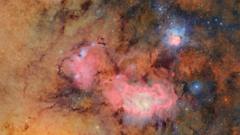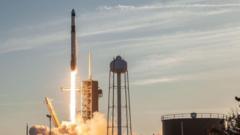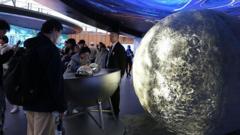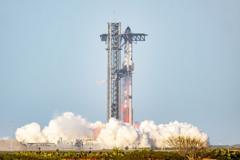The dazzling comet, C/2024 G3 (Atlas), could become a stunning sight across the globe, particularly in the southern hemisphere, as it nears its closest approach to the Sun.
**Rare Comet C/2024 G3 (Atlas) to Light Up Night Sky for First Time in 160,000 Years**
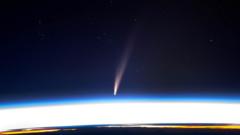
**Rare Comet C/2024 G3 (Atlas) to Light Up Night Sky for First Time in 160,000 Years**
A comet expected to shine as bright as Venus will be visible to Earth for the first time in a millennium and a half.
A remarkable celestial event is upon us as Comet C/2024 G3 (Atlas) is set to illuminate the night sky for the first time in 160,000 years. NASA recently announced that the comet has reached its perihelion—its closest point to the Sun—on Monday. As a result, this rare phenomenon may be visible to the naked eye in the coming days.
Astronomers assert that predicting a comet's brightness is notoriously difficult. However, C/2024 G3 has the potential to shine as bright as Venus, making it a spectacle worth watching. Although the precise locations from which the comet can be seen are not yet known, experts believe that viewing conditions may be optimal from the southern hemisphere.
Last year, the comet was detected by NASA's Asteroid Terrestrial-impact Last Alert System. Dr. Shyam Balaji, an astroparticle physics and cosmology researcher at King's College London, stated that current calculations suggest the comet will glide within 8.3 million miles from the Sun, qualifying it as a "sun-skirting" comet. This event is being described by the university as a once-in-a-lifetime opportunity.
Visibility of the comet may peak in the days surrounding its perihelion, depending on various factors, including local sky conditions and the comet's activity. "As with all comets, its visibility and brightness can be unpredictable," noted Dr. Balaji.
For those in the Southern Hemisphere, Dr. Balaji recommends looking toward the eastern horizon at dawn, and after perihelion, spectators should glance toward the western horizon following sunset for the best opportunity to catch a glimpse. While the comet is expected to be quite bright, experts caution that not all comets meet brightness expectations, with some appearing fainter than anticipated.
In the Northern Hemisphere—including the UK—viewing the comet may prove more difficult due to its positioning relative to the Sun. Stargazers are encouraged to check local weather conditions for clear skies as sightings could vary by location.
For optimal viewing conditions, Dr. Balaji suggests finding a spot away from light pollution and using binoculars or small telescopes for a better chance of observing this extraordinary comet. As always, safety is paramount when stargazing; he advised caution during sunrise and sunset while tracking the comet's trajectory in the sky.
NASA astronaut Don Pettit shared an awe-inspiring image of the comet taken from the International Space Station, declaring it "totally amazing" to witness a comet from orbit. As we prepare for this once-in-a-millennium experience, astronomy enthusiasts and casual observers alike are in for a treat in the darkened skies above.



